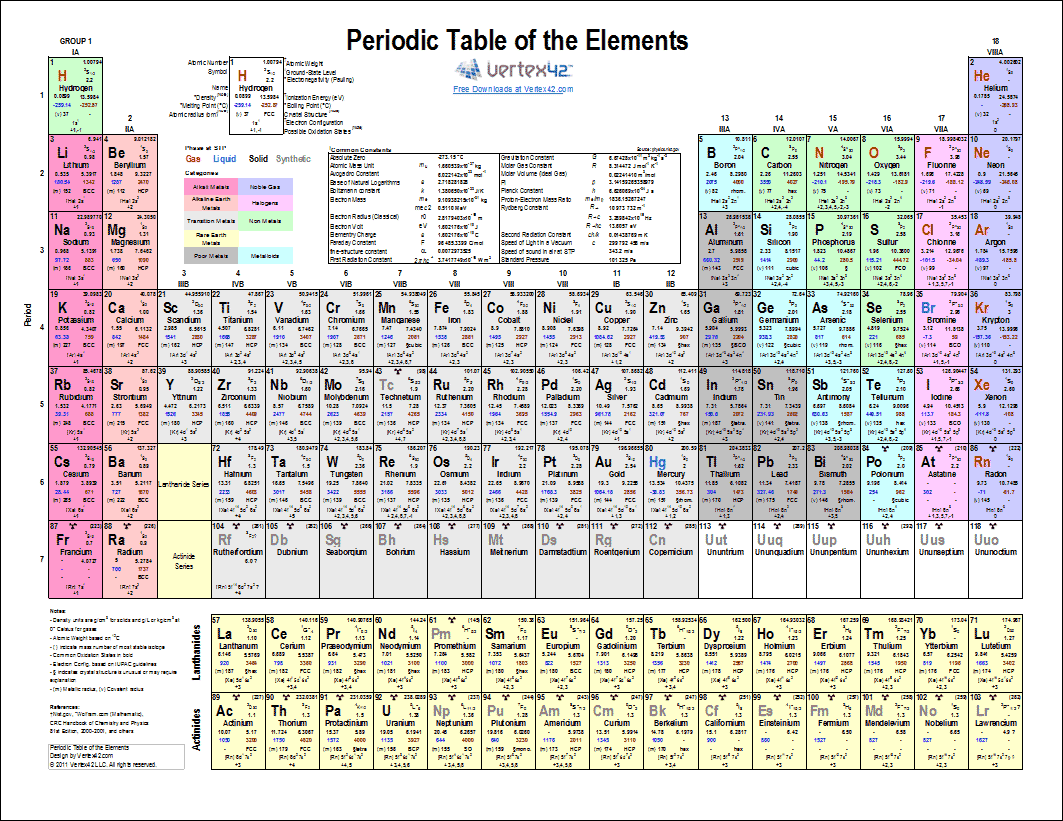
There are 18 groups in the standard periodic table. The exception is hydrogen, which is on the top left of the table.A column of elements down the table is called a group. Nonmetals are clustered in the upper right hand section of the periodic table. Metals tend to be good electrical and thermal conductors, hard, and shiny. Most other element groups have electron affinities lower than that of the halogens, but greater than the noble gases. Halogens (like chlorine and iodine) have high electron affinities. Noble gases (like argon and neon) have an electron affinity near zero and tend not to accept electrons. The ability to accept an electron, electron affinity can be predicted based on element groups. Electronegativity (measure of ability to form a chemical bond).Ionization Energy (energy required to remove an electron from the atom).decreases moving left to right across the table.increases moving top to bottom down the table.Atomic Radius (half the distance between the center of two atoms just touching each other).The periodic table is organized to showcase the different trends (periodicity). These include the alkali metals, alkaline earths, basic metals, semimetals, and transition metals. Many periodic tables identify element types using different colors for different element types. Many periodic tables include the element's name to help those who may not remember all the symbols for elements.

The bottom two rows-the lanthanides and actinides-all belong to the 3B group, and are listed separately. Each period indicates the highest energy level the electrons of that element occupies at its ground state. Each element in a group has the same number of valence electrons and typically behave in a similar manner when bonding with other elements.

Mendeleev's original periodic table organized elements in order of increasing atomic mass or weight. When a range is given, it's because the abundance of isotopes varies from one sampling location to another. Other tables include two numbers, which represent a range of values. Sometimes a periodic table cites a single value for atomic weight. The element's atomic mass in atomic mass units is a weighted average mass of the element's isotopes. Changing number of electrons produces ions while changing the number of neutrons produces isotopes. Variation in the number of electrons or neutrons does not change the type of element. The number of protons is the deciding factor when distinguishing one element from another. The atomic number is how many protons an atom of that element contains. The modern periodic table is organized in order of increasing atomic number.

Usually, the symbol is an abbreviation of the element name, but some symbols refer to older names of the elements (for example, the symbol for silver is Ag, which refers to its old name, argentum). Each symbol is either one or two letters in length. In some cases, the abbreviation comes from the element's Latin name. Each element's cell typically contains lots of important information about that element.Įlement symbols are abbreviations of the element's name. The periodic table contains informative cells for each element arranged by increasing atomic number and chemical properties.


 0 kommentar(er)
0 kommentar(er)
